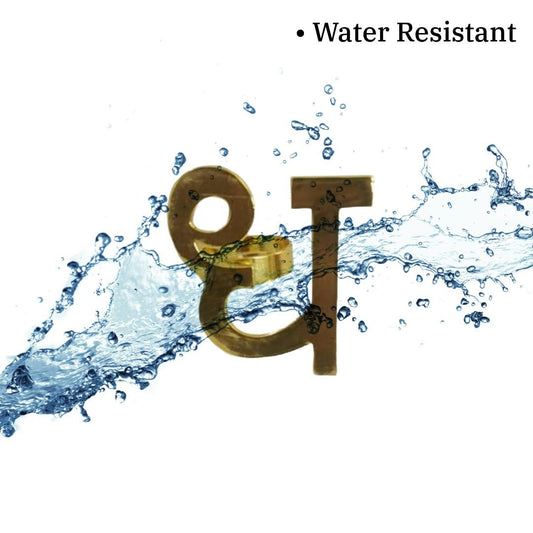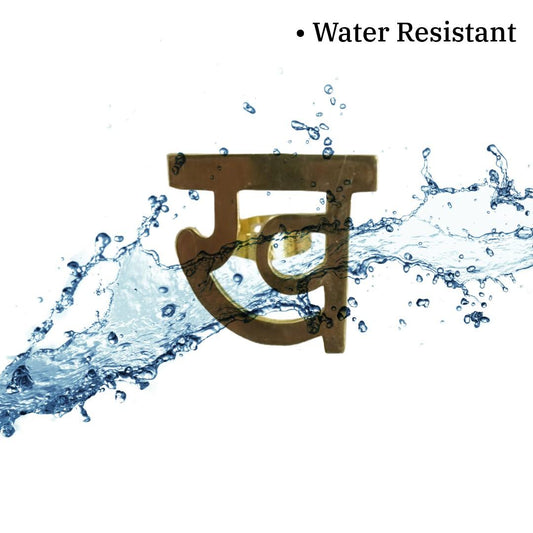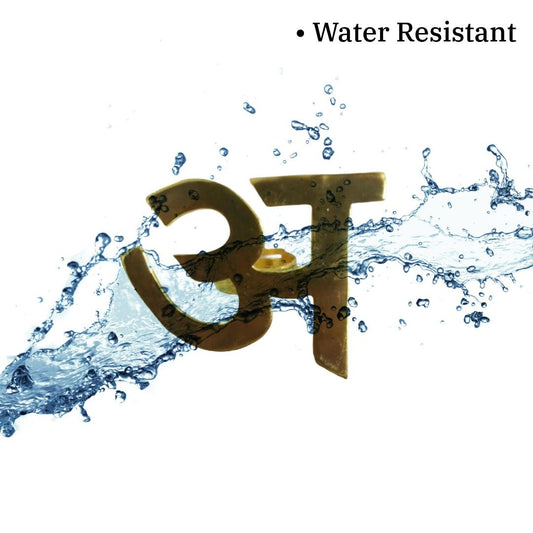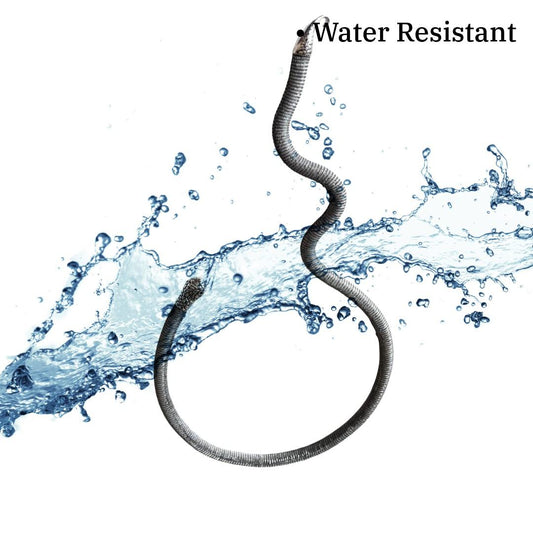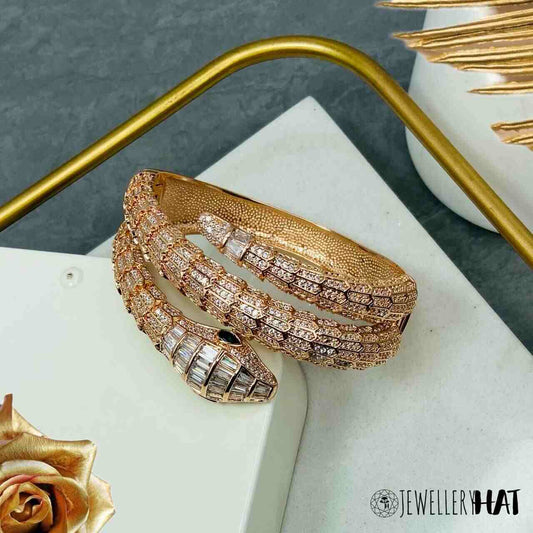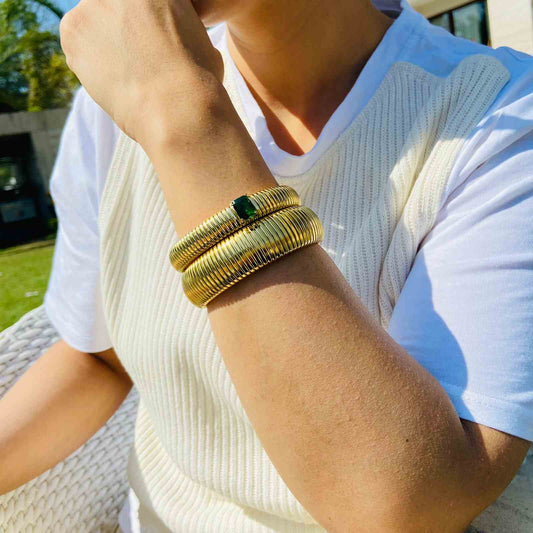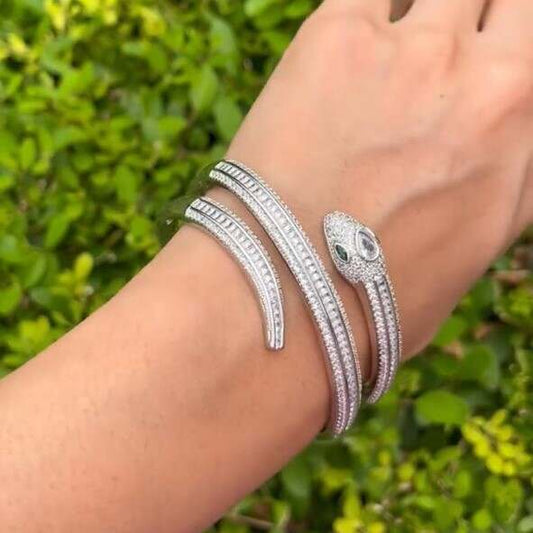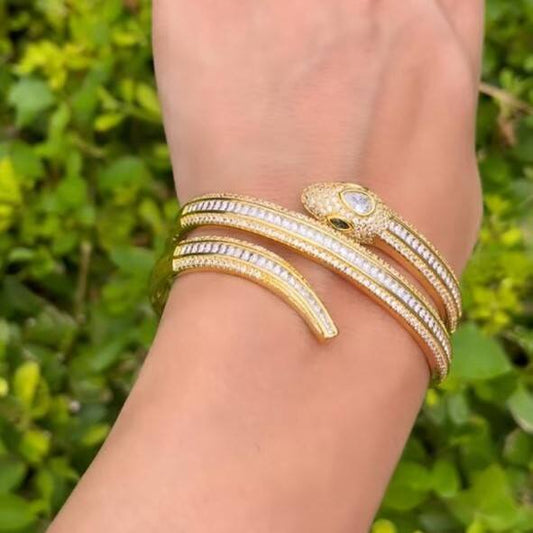Jewelry is a cherished accessory that often holds significant emotional and aesthetic value. However, if you've ever invested in inexpensive jewelry, you might have noticed that it tarnishes more quickly than higher-end pieces. This raises the question: "Why does cheap jewelry tarnish?" In this comprehensive blog, we will explore the reasons behind tarnishing in cheap jewelry, understand the science behind it, and explain how Jewellery Hat—India’s fastest-growing fashion jewelry brand—addresses these issues with its high-quality, anti-tarnish solutions.
What is Tarnish?
Tarnish is a chemical reaction that causes metals to develop a dull or discolored layer on their surface. This discoloration is typically caused by exposure to environmental factors. Tarnish differs from rust, which affects iron and steel, in that it primarily affects metals like silver, copper, and certain alloys. Understanding why cheap jewelry tarnishes involves examining several key factors:
1. Oxidation
- What It Is: Oxidation occurs when a metal reacts with oxygen in the air. This chemical reaction leads to the formation of metal oxides, which appear as a darkened or discolored layer on the metal’s surface.
- Why Cheap Jewelry Tarnishes: Inexpensive jewelry is often made from alloys or low-quality metals that are more susceptible to oxidation. Unlike higher-quality jewelry, cheap pieces may lack protective layers that prevent oxidation, making them more prone to tarnishing.
2. Sulfur Compounds
- What They Are: Sulfur compounds, such as hydrogen sulfide (H₂S), are pollutants in the environment that react with metals to form sulfides. This reaction is common in areas with high pollution or in certain foods.
- Why Cheap Jewelry Tarnishes: Cheap jewelry often uses base metals or alloys that react easily with sulfur compounds. These materials may not have the protective coatings found on more expensive jewelry, leading to faster tarnishing.
3. Moisture
- What It Is: Moisture, including water and high humidity, accelerates the tarnishing process by promoting oxidation and corrosion.
- Why Cheap Jewelry Tarnishes: Lower-quality jewelry often lacks moisture-resistant properties. When exposed to water or high humidity, inexpensive pieces can tarnish quickly due to the increased rate of oxidation and corrosion.
4. Acidic Substances
- What They Are: Acids from skin oils, sweat, cosmetics, and cleaning products can react with metals and cause tarnish.
- Why Cheap Jewelry Tarnishes: Cheap jewelry often lacks protective coatings to shield it from acidic substances. As a result, these pieces are more likely to tarnish when they come into contact with acids.
Factors Contributing to Tarnishing in Cheap Jewelry
Understanding why cheap jewelry tarnishes involves examining several factors that impact the quality and durability of these pieces. Inexpensive jewelry often suffers from tarnishing due to its material composition, lack of protective coatings, and inferior manufacturing processes. Here’s a detailed look at each of these factors:
1. Material Quality
The materials used in jewelry are crucial in determining how well it can resist tarnishing. Cheap jewelry often utilizes materials that are more prone to tarnishing due to their reactive properties.
Base Metals
Base metals are common in inexpensive jewelry because they are cheaper to produce. These metals include:
- Nickel: Nickel is a widely used base metal in cheap jewelry. It is highly reactive and prone to oxidation and tarnishing. Nickel jewelry can develop a dull, discolored layer when exposed to moisture, air, and sulfur compounds.
- Brass: Brass, an alloy of copper and zinc, is another common base metal used in low-cost jewelry. While it’s relatively affordable, brass tarnishes quickly because the copper component reacts with environmental elements, leading to discoloration.
- Copper: Copper is a metal known for its susceptibility to tarnishing. When exposed to air and moisture, copper quickly forms copper oxide or copper carbonate, resulting in a greenish or darkened appearance.
Why Base Metals Tarnish: These metals are more reactive than precious metals like gold or silver. Their exposure to air, moisture, and sulfur compounds accelerates tarnishing. Base metals often lack the protective layers found in higher-quality jewelry, making them more prone to discoloration.
Plated Metals
Plated metals involve a thin layer of a more expensive metal applied over a base metal. Common plating includes:
- Gold Plating: Gold-plated jewelry has a thin layer of gold applied over a base metal. Over time, this plating can wear off, exposing the underlying metal. Once exposed, the base metal can tarnish, affecting the overall appearance of the jewelry.
- Silver Plating: Silver-plated jewelry features a thin layer of silver over a base metal. Similar to gold plating, silver plating can wear away, leading to tarnishing of the underlying metal.
Why Plated Metals Tarnish: The thin layer of precious metal can wear off due to regular wear and tear. Once the underlying base metal is exposed, it becomes susceptible to tarnishing. Additionally, the plating may not be as durable or resistant to tarnishing agents as solid precious metals.
2. Lack of Protective Coatings
Protective coatings are essential for preventing tarnish and maintaining the appearance of jewelry. Cheap jewelry often lacks these coatings, contributing to its tendency to tarnish.
Rhodium Plating
Rhodium plating involves applying a thin layer of rhodium, a precious metal, over jewelry to provide a protective barrier. This coating has several benefits:
- Protection Against Tarnish: Rhodium is highly resistant to tarnishing and corrosion. It creates a barrier that prevents tarnishing agents from reaching the underlying metal.
- Enhanced Shine: Rhodium plating adds a reflective quality, giving jewelry a bright, polished appearance.
Why Lack of Rhodium Plating Causes Tarnish: Jewelry without rhodium plating lacks this protective layer, making it more vulnerable to tarnishing. Exposed metals are directly exposed to environmental factors, leading to faster discoloration.
Clear Lacquers
Clear lacquers are coatings applied to jewelry to protect it from tarnishing. These coatings form a thin, transparent layer over the metal:
- Barrier Against Environmental Elements: Clear lacquers prevent direct contact between the metal and tarnishing agents such as sulfur compounds and moisture.
- Preservation of Appearance: By blocking out tarnishing elements, clear lacquers help maintain the jewelry’s original shine and color.
Why Lack of Clear Lacquers Causes Tarnish: Jewelry without clear lacquer coatings is more susceptible to tarnishing. The absence of a protective layer allows tarnishing agents to interact with the metal, causing discoloration.
3. Inferior Manufacturing Processes
The manufacturing processes used to create cheap jewelry can also contribute to its tendency to tarnish. Inexpensive jewelry often undergoes less rigorous quality control and manufacturing practices.
Inadequate Alloying
Alloying is the process of mixing metals to achieve desired properties. Cheap jewelry often uses poor-quality alloys:
- Reactive Metals: Inexpensive alloys may contain reactive metals such as nickel or zinc, which are more prone to tarnishing.
- Inconsistent Composition: Low-quality alloys may have inconsistent metal composition, affecting their resistance to tarnishing and corrosion.
Why Inadequate Alloying Causes Tarnish: Poor-quality alloys are more susceptible to tarnishing due to the presence of reactive metals. Inconsistent alloy composition can also result in uneven tarnishing and a decrease in the jewelry's overall durability.
Poor Quality Control
Quality control involves inspecting and testing jewelry to ensure it meets specific standards:
- Lack of Rigorous Testing: Cheap jewelry often lacks stringent quality control measures, leading to products that may not meet industry standards for tarnish resistance.
- Inconsistent Manufacturing: Inexpensive jewelry may be produced with less attention to detail, resulting in variations in quality and increased susceptibility to tarnishing.
Why Poor Quality Control Causes Tarnish: Jewelry produced with inadequate quality control may have flaws or inconsistencies that make it more prone to tarnishing. Lack of rigorous testing can result in products that do not perform well over time.
How Jewellery Hat Addresses Tarnishing Issues
Jewellery Hat, India’s fastest-growing fashion jewelry brand, addresses tarnishing concerns with its high-quality products and innovative solutions:
- Premium Stainless Steel: Jewellery Hat uses high-quality stainless steel, known for its corrosion resistance and durability. Stainless steel contains chromium, which forms a protective layer that resists tarnishing.
- Advanced Anti-Tarnish Technology: The brand employs specialized coatings and treatments to prevent tarnish. This includes rhodium plating and anti-tarnish cloths that neutralize tarnishing agents.
- Lifetime Replacement Warranty: Jewellery Hat offers a lifetime replacement warranty on polishing, reflecting their commitment to quality and customer satisfaction. This warranty ensures long-term maintenance and peace of mind.
How to Address Tarnishing in Cheap Jewelry
If you’re wondering how to address tarnish in cheap jewelry, there are several effective methods to clean and maintain your pieces:
1. Cleaning and Maintenance
Regular cleaning is crucial to mitigate tarnishing and restore the appearance of your jewelry:
- DIY Cleaning Solutions: A mixture of baking soda and aluminum foil can help remove tarnish. Line a bowl with aluminum foil, add hot water and baking soda, and soak the jewelry. Rinse and dry thoroughly.
- Commercial Cleaners: Use tarnish-specific cleaning solutions designed for the metal in your jewelry. Follow the manufacturer’s instructions for best results.
2. Proper Storage
Proper storage can help reduce tarnishing and extend the life of your jewelry:
- Avoid Moisture: Store jewelry in a dry place and avoid exposing it to water or high humidity.
- Use Anti-Tarnish Pouches: Anti-tarnish pouches or cloths contain materials that absorb tarnishing agents and protect your jewelry from tarnishing.
3. Regular Maintenance
Regular maintenance helps keep your jewelry looking its best:
- Polishing: Regularly polish your jewelry using a soft cloth and a non-abrasive polishing product to remove tarnish and restore its shine.
- Inspection: Periodically inspect your jewelry for signs of tarnish and address them promptly to prevent further damage.
How Jewellery Hat Solves Tarnish Problems
Jewellery Hat is revolutionizing the fashion jewelry industry in India with its innovative approach to tarnish prevention. Here’s how Jewellery Hat addresses tarnish issues:
1. Premium Stainless Steel
Jewellery Hat uses high-quality stainless steel in its jewelry pieces, known for its superior tarnish resistance:
- Corrosion Resistance: Stainless steel contains chromium, which forms a protective layer on the metal’s surface. This layer resists tarnishing agents and maintains the jewelry’s appearance over time.
- Durability: Stainless steel is durable and retains its appearance, making it ideal for everyday wear and reducing the need for frequent cleaning.
2. Advanced Anti-Tarnish Technology
Jewellery Hat employs advanced anti-tarnish treatments to enhance the longevity of their jewelry:
- Specialized Coatings: The brand uses cutting-edge coatings, such as rhodium plating, to provide a robust shield against tarnishing agents. These coatings prevent direct contact between the metal and tarnishing elements.
- Effective Treatments: Their anti-tarnish technology neutralizes sulfur compounds and other corrosive elements, ensuring the jewelry remains stunning and resistant to tarnish.
3. Lifetime Replacement Warranty
Jewellery Hat offers a lifetime replacement warranty on polishing, reflecting their commitment to quality and customer satisfaction:
- Coverage: The warranty addresses issues related to tarnishing and maintenance, providing long-term peace of mind for customers.
- Customer Assurance: By offering this warranty, Jewellery Hat ensures that their jewelry maintains its beauty and value, even after years of wear.
Conclusion
Understanding why cheap jewelry tarnishes involves recognizing the impact of material quality, protective coatings, and manufacturing processes. Inexpensive jewelry tarnishes more quickly due to the use of reactive metals, lack of protective layers, and inferior manufacturing techniques. To address tarnishing, regular cleaning, proper storage, and maintenance are essential.
Jewellery Hat, India’s leading fashion jewelry brand, addresses these concerns with its premium stainless steel, advanced anti-tarnish technology, and lifetime replacement warranty. By choosing Jewellery Hat’s high-quality, tarnish-resistant jewelry, you can enjoy beautiful pieces that maintain their shine and value over time.
Explore the collection at Jewellery Hat to experience the benefits of anti-tarnish technology and enjoy jewelry that stands the test of time. This blog is optimized for the keyword “why does cheap jewelry tarnish” to enhance its visibility and ranking on Google, providing valuable insights into tarnish prevention and solutions.
Contact Us :-







